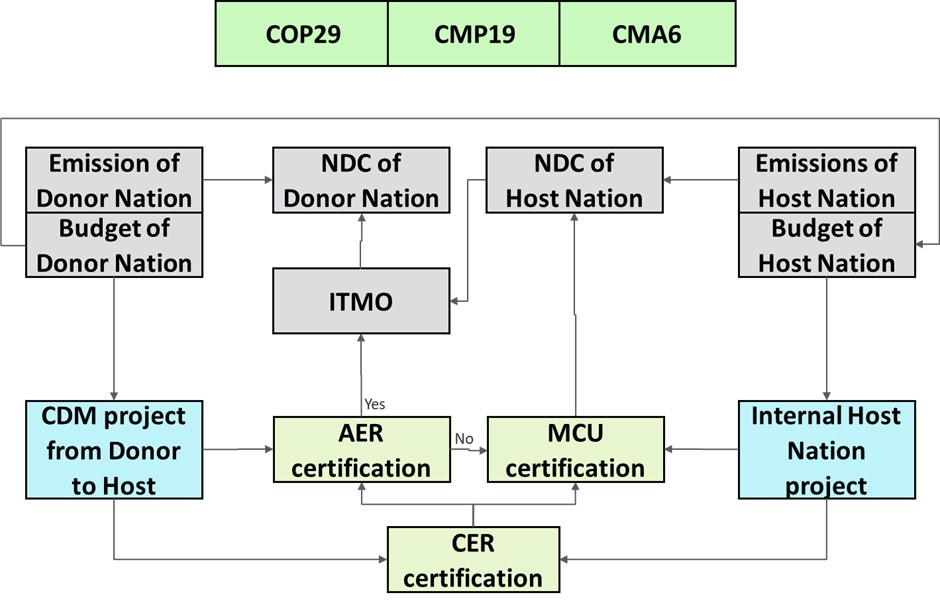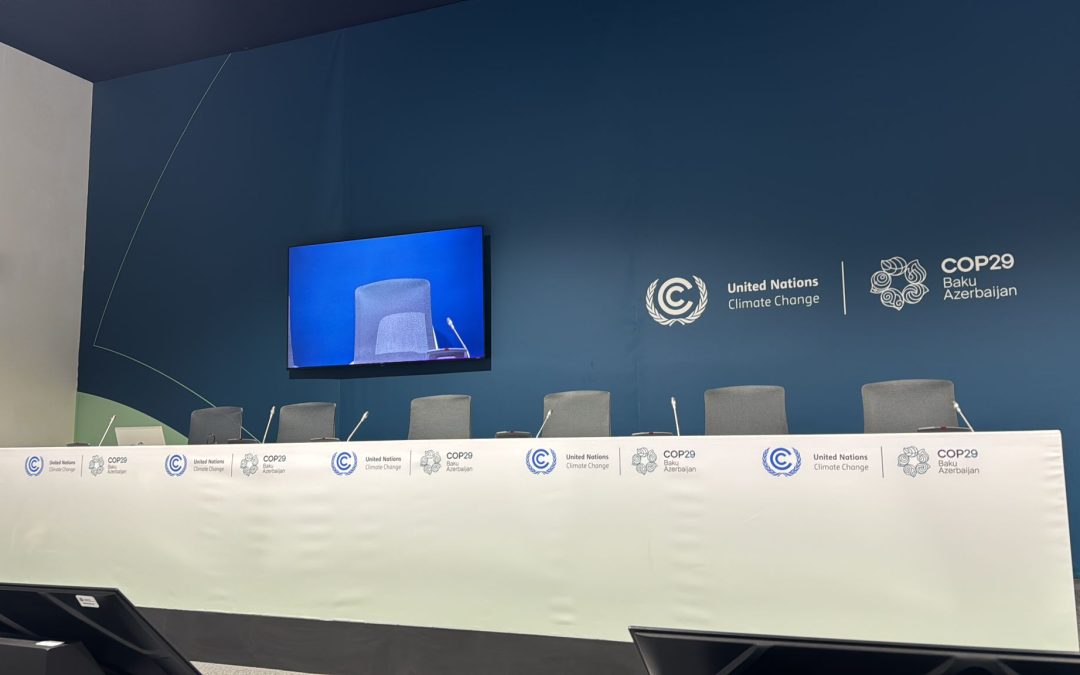Written by Mahilet Berihun, Surrey University; Orestis Aslanidis, University of Reading; both PhD SCENARIO DTP students
Observing COP discussions, it’s easy to get lost among impenetrable acronyms. The first day of COP29 has put the spotlight on Article 6.2 and 6.4 of the Paris Agreement. Disentangling the web of acronyms and the many iterations of the methodologies used in the Paris Agreement relating to carbon market can be difficult. However, it is important that COP stays accessible for as many people as possible as the issues being discussed and the negotiations have repercussions for everyone.
We have created this short guide to help you navigate the big ideas which are being discussed at the ‘Finance COP’:
- Nationally Determined Contributions (NDCs): This is fundamental for the Paris Agreement. It is a pledge by a country that represent all its national efforts to reduce carbon emissions.
- Clean Development Mechanism (CDM): First defined at Kyoto, a CDM project provides additional emission reductions without taking money away from the main activities needed to achieve the NDCs. CDM will be replaced by the end of this COP by Article 6.4 of the Paris Agreement, also known as the Paris Agreement Crediting Mechanism.
- Certified Emission Reduction (CER): a standardised emissions offset measurement used by CDM projects where each unit represents 1 tonne of CO2 equivalent. All projects receive a number of these by a supervisory board.
- Mitigating Contributing Unit (MCU): These can be used towards the NDCs of the country where a project is based but cannot be sold internationally. Companies can be involved financially in these, in order to contribute towards the NDCs of the host country (country where a project is based).
- Internationally Transferred Mitigation Outcomes (ITMOs): Any additional emission mitigation above that stated in a country’s NDCs. They can be sold to other countries and count towards the NDCs of the country to which they are sold.
- Authorised Emission Reduction (AER): The enhanced verification standard to be used for ITMOs
- Agreed Electronic Format (AEF): The format in which AER approved project carbon credits are submitted to be considered as ITMOs

Figure: The interconnectedness between all mechanisms mentioned above
Beyond understanding these ideas and principles, we must also acknowledge the evolution of the discussions and why Article 6.2 and 6.4 are in the spotlights of the discussions. The short explanation seems to be that it is all about checks and balances, to ensure the system of internationally traded carbon credits, outlined in Article 6, is not open to abuse by the Parties. With global news outlets awash with stories of greenwashing, mass evictions of indigenous groups, planting of forests that would be naturally regenerated in human absence, and much much more, the urgency of taking a resilient approach has become prevalent, following key agreements in prior years on adaptation funding and other higher-level topics.
This COP is all about the details though, hence the complexity. The main challenges are how to setup a system of internationally traded carbon credits that avoid the pitfalls seen so far:
- Carbon Fraud / Greenwashing i.e. is it just an outright lie that the project captures carbon
- Carbon Durability i.e. does the project only capture carbon very temporarily
- Biodiversity preservation i.e. does the project’s means of collecting carbon kill every other form of life or did it support a balanced ecosystem
- Indigenous / native / local population protection i.e. does the project respect the rights of people who live in the area that is affected by the carbon reduction project
As the first day of discussions comes to a close, important questions arise: should nations with weaknesses or inconsistencies in their NDCs be allowed to use the ITMO framework? And how big a role will biodiversity and indigenous rights protection have in AER certification?


